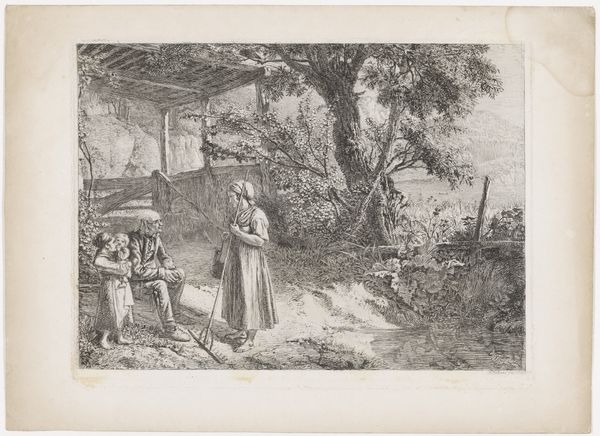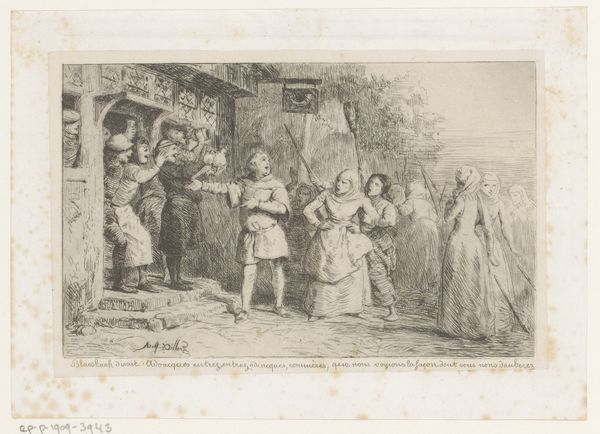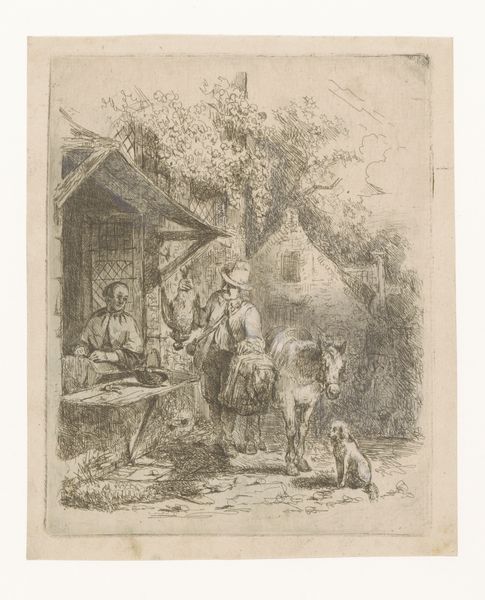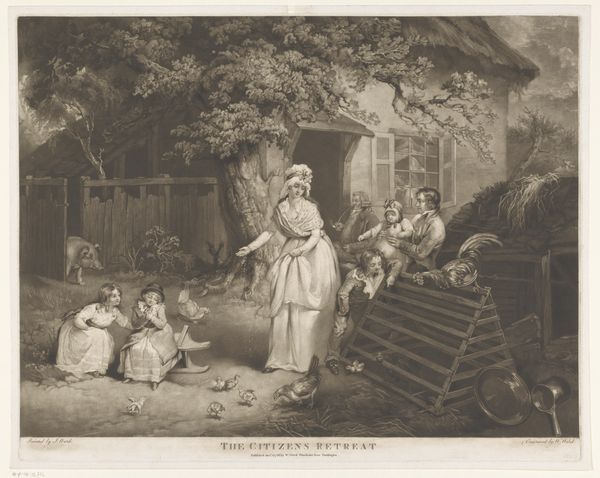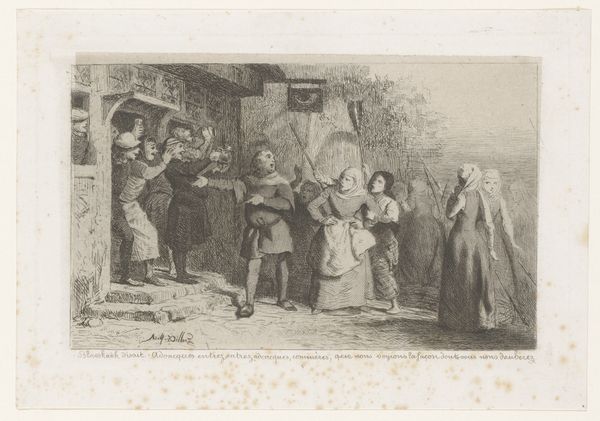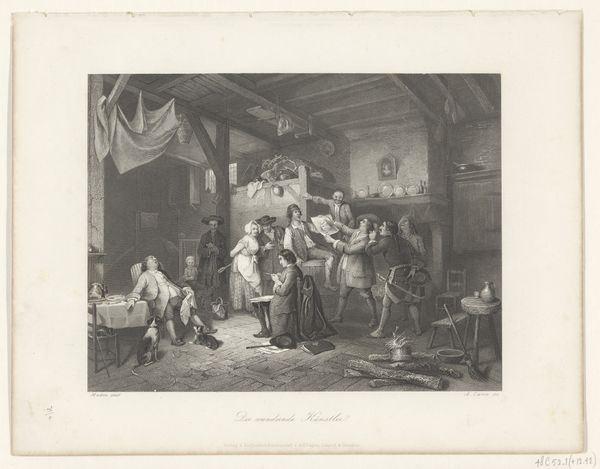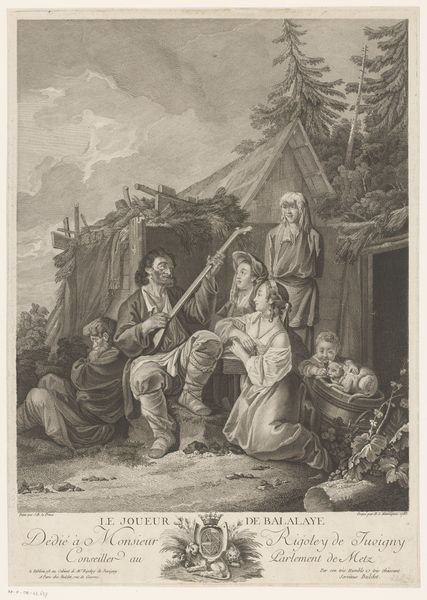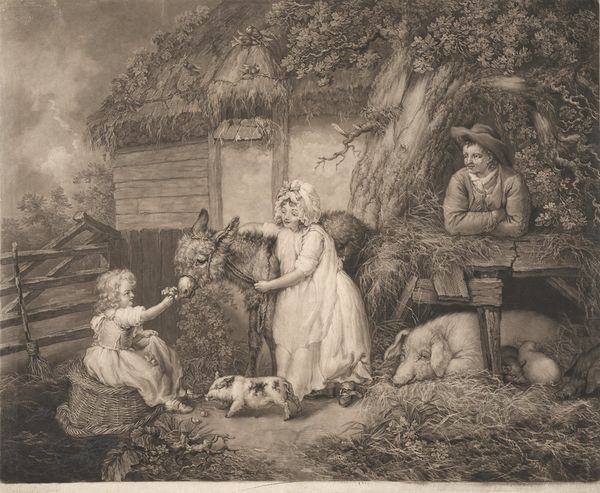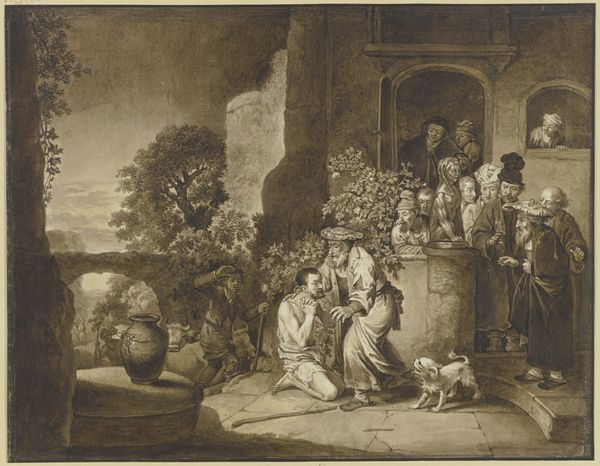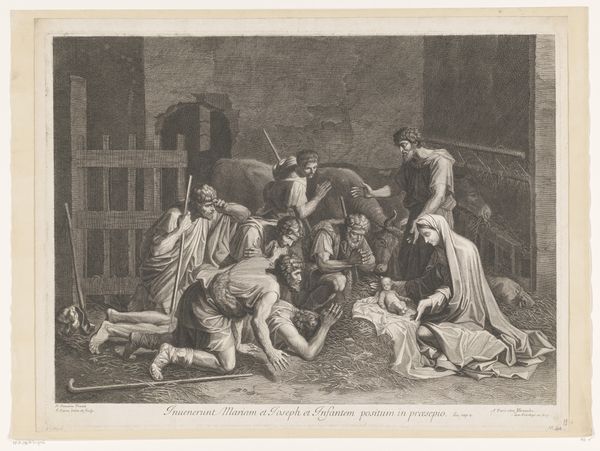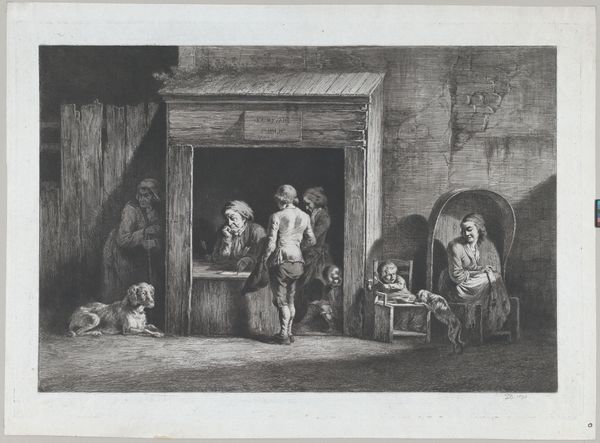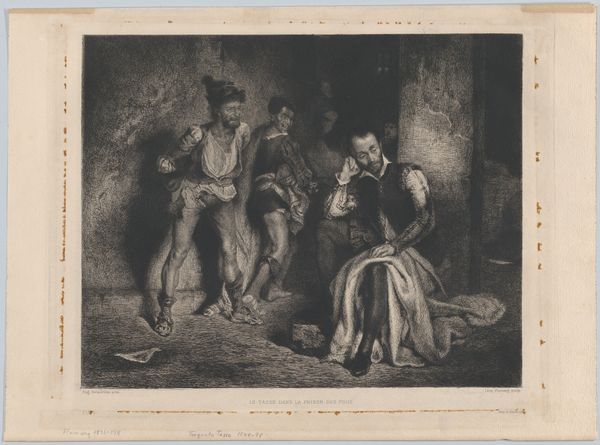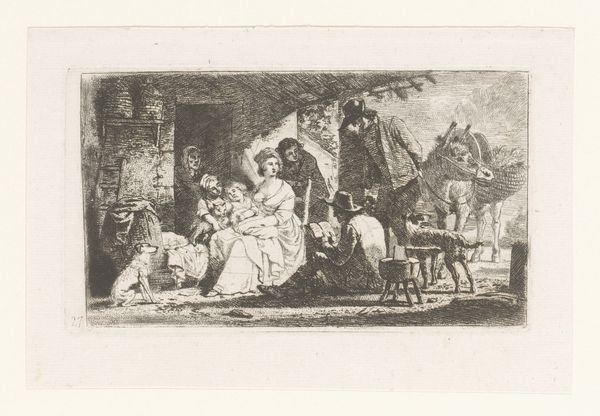
print, paper, engraving
#
narrative-art
# print
#
landscape
#
figuration
#
paper
#
romanticism
#
15_18th-century
#
genre-painting
#
engraving
Dimensions: height 455 mm, width 553 mm
Copyright: Rijks Museum: Open Domain
Curator: Let's consider William Ward's engraving from 1792, "Melkmeid en twee boerenknechten bij een stal," or "Milkmaid and Two Farmhands Near a Stable." What’s your first impression? Editor: Dreary, honestly. The muted tones evoke a somber mood. Even the implied romance seems… lackluster. The composition feels cramped, as if everyone's trapped in this rural scene. Curator: Notice how Ward has structured the print. He uses a strong diagonal line from the lower left corner, where the pig roots near a wheelbarrow, upwards toward the embrace. This directs our gaze across the composition. Then there’s the interplay of light and shadow, highlighting key areas of the subject matter. Editor: But what is he highlighting? The sentimental exchange feels forced, staged even. The leering overseer is a disturbing presence, standing between the labor inside and the suggestion of romance. Where’s the milkmaid’s agency in this so-called bucolic scene? This piece speaks more to the social and gender hierarchies of the time. Curator: Interesting take. I would consider that his mark-making lends itself to textures in juxtaposition: The velvety rendering of the livestock’s fur, versus the smoothness of the milkmaid’s pail. It calls into question assumptions about idealization. Editor: I suppose it comes down to intent, doesn’t it? It could be intended as a picturesque snapshot, sure, or as a critique of the commodification of rural life and labor. Are we meant to believe these are idyllic images, or are they really hinting at something more oppressive? Look closely at how the barn itself looms over the workers. This engraving is meant for contemplation. Curator: I can appreciate the visual argument you’re laying out; the diagonals and distribution of dark and light certainly contribute to that emotional impression. Editor: Right. Perhaps "The Barn Door," the alternate title, tells a less-complicated truth about it. The setting itself suggests captivity and an enduring sense of division. Food for thought.
Comments
No comments
Be the first to comment and join the conversation on the ultimate creative platform.

